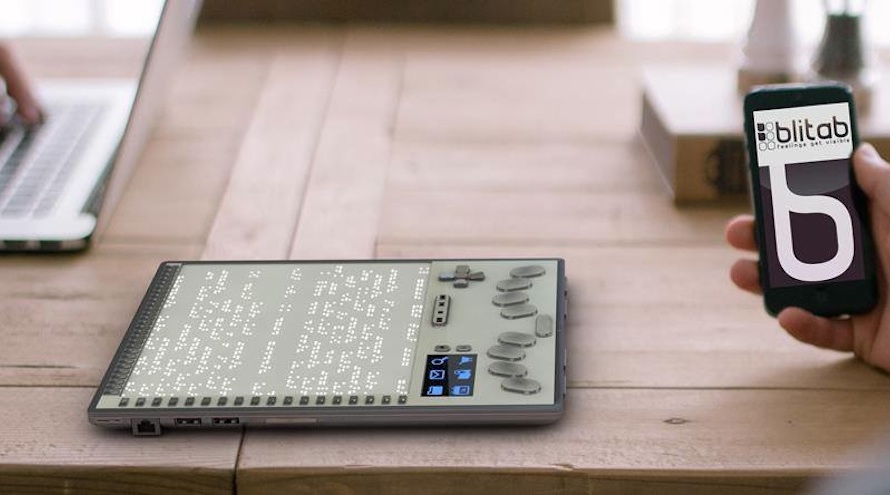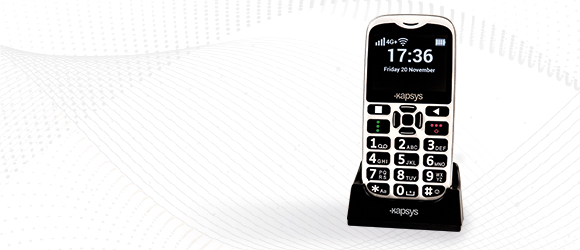Lightweight Technology for Low Vision: A Revolution in Accessibility
Lightweight Technology for Low Vision: A Revolution in Accessibility
Blog Article
An Overview to Life-altering Assistive Technology for the Blind and Aesthetically Impaired
The improvement of assistive technology has actually ushered in a transformative era for people who are blind or aesthetically damaged, offering devices that boost autonomy and enhance day-to-day experiences. Advancements such as smart navigating gadgets and AI-driven applications are redefining just how individuals interact with their surroundings, while available analysis remedies and smart home modern technologies promise to additional elevate the high quality of life.
Smart Navigating Devices
Smart navigating tools are reinventing the method people who are aesthetically impaired or blind connect with their setting. These innovative technologies, which integrate general practitioners, audio responses, and haptic signals, supply users with critical details regarding their surroundings, improving their independence and mobility.
One prominent instance is making use of smart walking canes equipped with sensing units that discover barriers and provide real-time comments with resonances or audio cues. These devices enable customers to navigate complex settings, such as busy streets or crowded public spaces, with increased confidence. In addition, wearable tools, such as smart glasses, are being created to aid in acknowledging faces, reading text, and determining things, additionally increasing the user's spatial awareness.
Furthermore, clever navigation devices are increasingly including fabricated knowledge to analyze information and adjust to customers' preferences. This personalized strategy not only enhances navigating effectiveness however also promotes a sense of empowerment among users. As technology remains to breakthrough, the potential for smart navigation tools to produce an extra accessible and inclusive world for people who are blind or aesthetically damaged continues to be appealing, inevitably improving their everyday experiences and interactions.
Cutting-edge Mobile Applications
Mobile applications are emerging as powerful tools for assisting individuals who are aesthetically impaired or blind, supplying a variety of capabilities that improve daily living. These applications harness advanced technology to promote daily jobs, improve accessibility, and promote independence.
One classification of ingenious mobile applications concentrates on aesthetic acknowledgment. Applications like Be My Eyes link users with sighted volunteers by means of video telephone calls, allowing real-time aid for tasks such as reading tags or browsing unknown atmospheres. Apps like Seeing AI use synthetic intelligence to define surroundings, checked out text, and recognize items, providing users with essential details at their fingertips.
One more significant area is navigating and alignment. Apps such as Aira and Close-by Explorer supply audio support, assisting customers navigate metropolitan spaces easily. They supply customized aid, permitting for a more positive exploration of the setting.
In addition, health and wellness and health apps deal with specific requirements, such as medicine administration and fitness tracking. These applications aim to promote an all natural technique to health, ensuring that customers can maintain their health individually.
Wearable Assistive Gadgets
Wearable assistive devices stand for a significant improvement in innovation created to support individuals that are blind or visually damaged. These devices enhance movement and independence by giving real-time responses regarding the surrounding environment. Amongst one of the most noteworthy wearable modern technologies are wise glasses outfitted with cams and sensing units, which can recognize obstacles and relay critical details via audio cues.

One more ingenious option includes see this site wrist-worn devices that use ultrasonic waves to find challenges and provide navigational support. These gadgets frequently come with adjustable setups, allowing individuals to tailor the notifies to their specific demands.
The integration of artificial intelligence in wearable assistive technology is likewise notable, as it continually improves the precision spectacles and responsiveness of these gadgets. Overall, wearable assistive tools are changing the lives of the blind and visually damaged, fostering greater autonomy and improving top quality of life through cutting-edge solutions.
Easily Accessible Reading Solutions
Obtainable analysis services play an important function in making it possible for people who are blind or aesthetically damaged to engage with text across numerous layouts. These options encompass a variety of modern technologies and tools created to enhance reading experiences, from conventional print materials to electronic material.
One prominent solution is Optical Character Recognition (OPTICAL CHARACTER RECOGNITION) modern technology, which transforms printed text into digital style, allowing users to pay attention to or read the material using display visitors. Furthermore, specialized e-readers furnished with text-to-speech abilities use adjustable reading experiences, making it possible for customers to readjust font dimensions and background shades for improved presence.
Another effective approach is braille display screens, which provide responsive responses by transforming electronic message right into braille. This permits people to go through touch, promoting higher independence and accessibility to literary works. Moreover, mobile applications developed for reviewing checked publications or papers can equip individuals with immediate access to a large collection of products.

Smart Home Technologies
Smart home innovations have actually reinvented the means people who are visually impaired or blind connect with their living atmospheres, improving both freedom and safety. These ingenious services take advantage of automation and connection to develop an accessible living space tailored to the requirements of users.
Smart audio speakers and voice-activated assistants supply hands-free control over numerous devices, permitting customers to adjust lights, safety and security, and temperature level actions through simple voice commands. This functionality reduces dependence on sighted aid and cultivates a feeling of freedom. Furthermore, wise lights systems can be customized to supply acoustic responses or tactile signs, making it possible for individuals to browse their homes much more efficiently.
In addition, security systems equipped with smart cams and sensing units can send out real-time signals to users, enhancing individual safety without necessitating visual verification. Automated door locks supply tranquility of mind, allowing individuals you could try these out to safeguard their homes effortlessly.
Integrating wise home modern technologies not only boosts daily living yet also motivates social communication via attached tools - Smart glasses for the visually impaired. With continuous improvements in assistive technology, the future appears encouraging, as more options will emerge to further encourage people who are aesthetically damaged or blind, guaranteeing a more comprehensive and independent way of living
Conclusion
In final thought, the innovations in assistive technology for the visually impaired and blind represent a significant jump toward improving independence and lifestyle. Smart navigating tools, cutting-edge mobile applications, wearable tools, easily accessible reading remedies, and smart home modern technologies collectively foster an inclusive atmosphere. This integration of modern technology not just enhances movement and daily living however also empowers people to involve completely with their environments, advertising higher freedom and involvement in culture.
Technologies such as wise navigation tools and AI-driven applications are redefining how individuals interact with their surroundings, while easily accessible analysis services and smart home modern technologies assure to further raise the quality of life. As technology continues to advance, the capacity for wise navigation tools to produce a more accessible and inclusive globe for people who are blind or visually impaired continues to be appealing, inevitably improving their day-to-day experiences and communications.
Wearable assistive devices represent a substantial improvement in innovation created to sustain people who are aesthetically damaged or blind. Among the most significant wearable technologies are smart glasses furnished with cams and sensing units, which can identify challenges and relay crucial info via sound hints.
Smart navigating devices, innovative mobile applications, wearable devices, available reading services, and smart home technologies jointly foster an inclusive environment.
Report this page